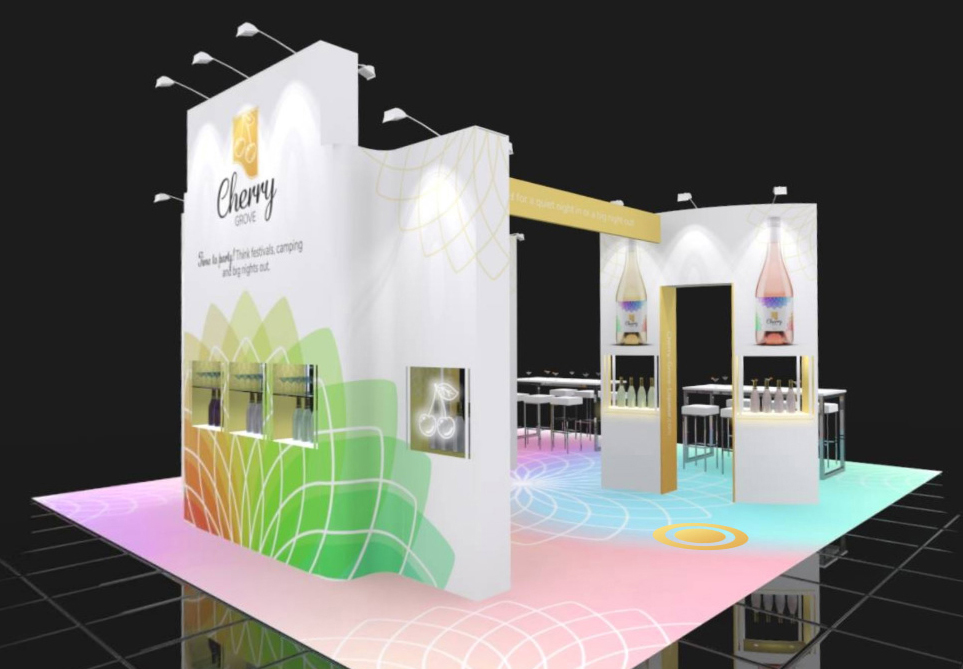Alan Jenkins (pictured below), founder and director of UK-based Quadrant2Design, describes how the design and build contractors reworked ‘virtual’ exhibition stands.
 During lockdown a real attempt was made to get virtual exhibiting off the ground. These efforts failed, largely due to clumsy execution and a failure to understand the true nature of an ‘event’.
During lockdown a real attempt was made to get virtual exhibiting off the ground. These efforts failed, largely due to clumsy execution and a failure to understand the true nature of an ‘event’.
During those bleak months of lockdown, we watched the idea of ‘virtual events’ and virtual exhibition stands, start to get attention. But we struggled to see the attraction. Surely an ‘event’ is a time-limited meeting, where you mingle, talk, share ideas, get introduced to new products and services, and maybe even share a joke or two!
A virtual event was none of those things, so we wanted to marry virtual technology with ‘physical’ stands.
The virtual event boom never really happened. But we started to think – what if we could create a website for exhibitors that worked alongside their physical exhibition stand, and generated real excitement that enticed visitors?
After all, exhibitors are spending considerable chunks of marketing cash on what is essentially a two- or three-day event. Wouldn’t it be a great idea to generate as much marketing-heat around this time-limited event as possible, and make it a longer marketing activity? From there Quadrant2Design’s personalised event website concept was born.
Dual expertise
We are website developers well as being exhibition stand designers. This dual expertise enabled us to build a client’s personalised event website, with the same design-assets as used on their physical exhibition stand. The website shows visuals of the stand that exactly match the client’s final exhibition stand, creating brand-building recognition.
The event website also contains modules that show the exhibition stand’s hall location, show dates, show location, an option to make an appointment for show demos or meetings, among others.
We explored the best timeline for our client, and settled on creating event websites that go live five weeks pre-show and is kept live for five weeks post-show. Our goal was to leverage what was a two-to-three-day event into a 10-week marketing campaign.

Working out the timeline
We also wanted to provide them with the marketing essentials during that timeline, which we discovered are:
- Email marketing with link to the personalised event website, up to five weeks pre-event, and follow-ups for up to five weeks post-show
- Quality visuals of the stand
- Promoting new products or services clients will offer at their stand.
- Stand location through hall-maps and stand recognition
- Pre-book options for stand demos and meetings
We also explored how to empower the virtual exhibition stands, as in a post pandemic world, we should remember that many potential visitors may not be able to attend the show. In that case, via their personalised event website, the client’s stand has the potential to be the only stand visitors see – so they absorb the client’s marketing message without visiting the show.
Now that’s a real virtual exhibition stand!





